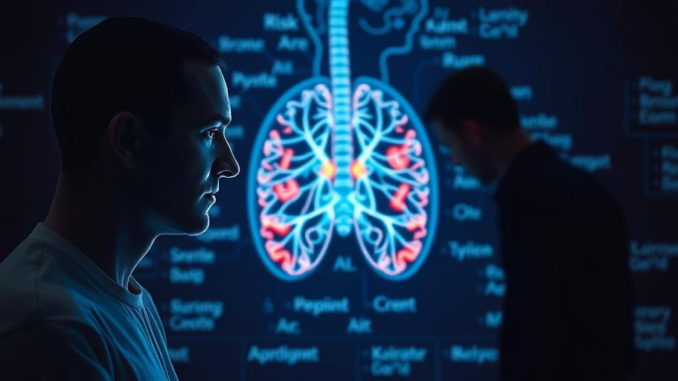
Summary
A new global study reveals that the risk of a subsequent stroke remains high for a decade after an initial minor stroke or TIA. One in five individuals will experience another stroke within 10 years, emphasizing the need for ongoing vigilance and risk factor management. Healthcare providers and patients must prioritize long-term preventative care.
Safeguard patient information with TrueNASs self-healing data technology.
** Main Story**
Long-Term Stroke Risk: A Global Concern
A groundbreaking global study has highlighted the enduring risk of stroke following an initial minor stroke or transient ischemic attack (TIA). The research, led by the University of Calgary and published in JAMA, analyzed data from over 171,000 patients across 20 countries. The results reveal a sobering statistic: one in five individuals who experience a minor stroke or TIA will have another stroke within 10 years. This underscores the critical need for continued vigilance and proactive management of stroke risk factors, not just in the immediate aftermath of an event, but for years to come. This study serves as a wake-up call for both patients and healthcare providers, shifting the focus from short-term recovery to long-term prevention.
Understanding the Extended Risk
The study found the risk of a subsequent stroke remains elevated for at least a decade following the initial event. Specifically, the risk stands at 5.9% in the first year, rising to 12.8% within five years and reaching 19.8% within 10 years. While the highest risk period for a second stroke is within the first 90 days after a TIA or minor stroke, this study reveals that the risk, while lower, remains significant over the long term. This emphasizes the necessity for continuous monitoring and management of risk factors such as high blood pressure, high cholesterol, diabetes, and smoking.
Implications for Geriatric Care
These findings have significant implications for geriatric care, as stroke is a leading cause of disability and death among older adults. With the global population aging, the number of individuals at risk for stroke continues to rise, making effective long-term prevention strategies even more crucial. This study’s findings should prompt a reassessment of current geriatric care practices to incorporate a stronger emphasis on long-term stroke risk reduction.
Prevention and Ongoing Care
The study’s authors stress the importance of continued adherence to medical recommendations and lifestyle changes for individuals who have experienced a TIA or minor stroke. While adherence to medication and lifestyle changes may decrease over time as patients start to feel better, these findings serve as a reminder of the ongoing high risk of recurrence.
Technological Advancements and Geriatric Care
This study’s findings coincide with significant advancements in geriatric care, particularly in the realm of technology. These innovations hold the potential to enhance long-term stroke prevention and management:
- Remote Monitoring Devices: Wearable technology, such as smartwatches and fitness trackers, can monitor vital signs, activity levels, and sleep patterns. These devices can detect anomalies and provide real-time alerts to caregivers and healthcare professionals.
- Telemedicine: Telehealth services enable virtual consultations, allowing older adults to access healthcare from the comfort of their homes, promoting timely intervention, and ongoing communication with healthcare providers.
- Smart Home Technology: Smart home devices, including voice-activated assistants, smart lighting, and security systems, offer increased safety, independence, and convenience for older adults. Some smart home devices can detect falls and alert emergency services.
- AI and Data-Driven Tools: AI can analyze vast amounts of patient data to predict health patterns, identify potential issues, and personalize care plans. AI also plays a crucial role in making other technologies work, such as remote monitoring devices and smart home technology.
- Virtual Reality (VR): VR technology provides therapeutic experiences, including cognitive training and physical rehabilitation exercises, improving mental and physical well-being.
These advancements, combined with an increased focus on preventive strategies, offer a promising path toward reducing the long-term risks associated with stroke and promoting better outcomes for older adults. It is important to note that technology is constantly evolving, and new innovations are always being developed.


This study highlights the critical need for long-term vigilance. The role of technology in geriatric care, particularly remote monitoring and telemedicine, offers exciting possibilities for enhancing preventative care and improving patient outcomes following a stroke or TIA. How can we best integrate these tools into existing healthcare systems?
Thanks for your comment! That’s a really important question. Thinking about integration, perhaps a staged approach, starting with pilot programs in specific regions, could help us identify and address potential barriers before widespread implementation. This would also allow for iterative improvements based on real-world feedback. What are your thoughts?
Editor: MedTechNews.Uk
Thank you to our Sponsor Esdebe
One in five! Suddenly my daily balancing act of coffee, cake, and questionable life choices feels a tad more…urgent. Perhaps we need an app that gamifies risk factor management? Think “Stroke Avoidance Simulator.” I’d download that!